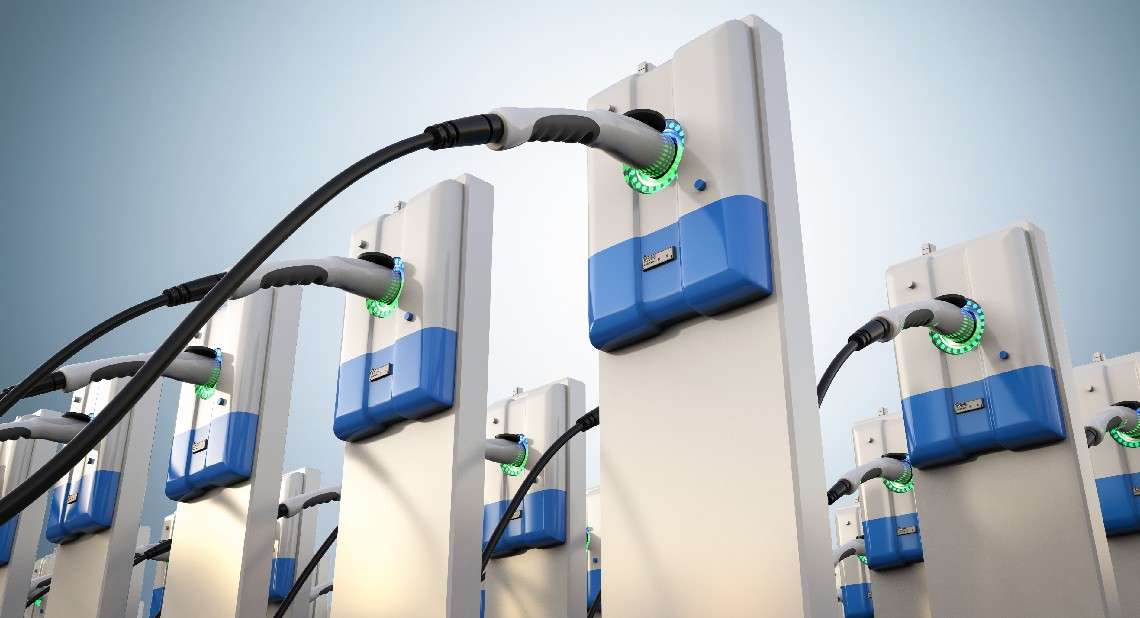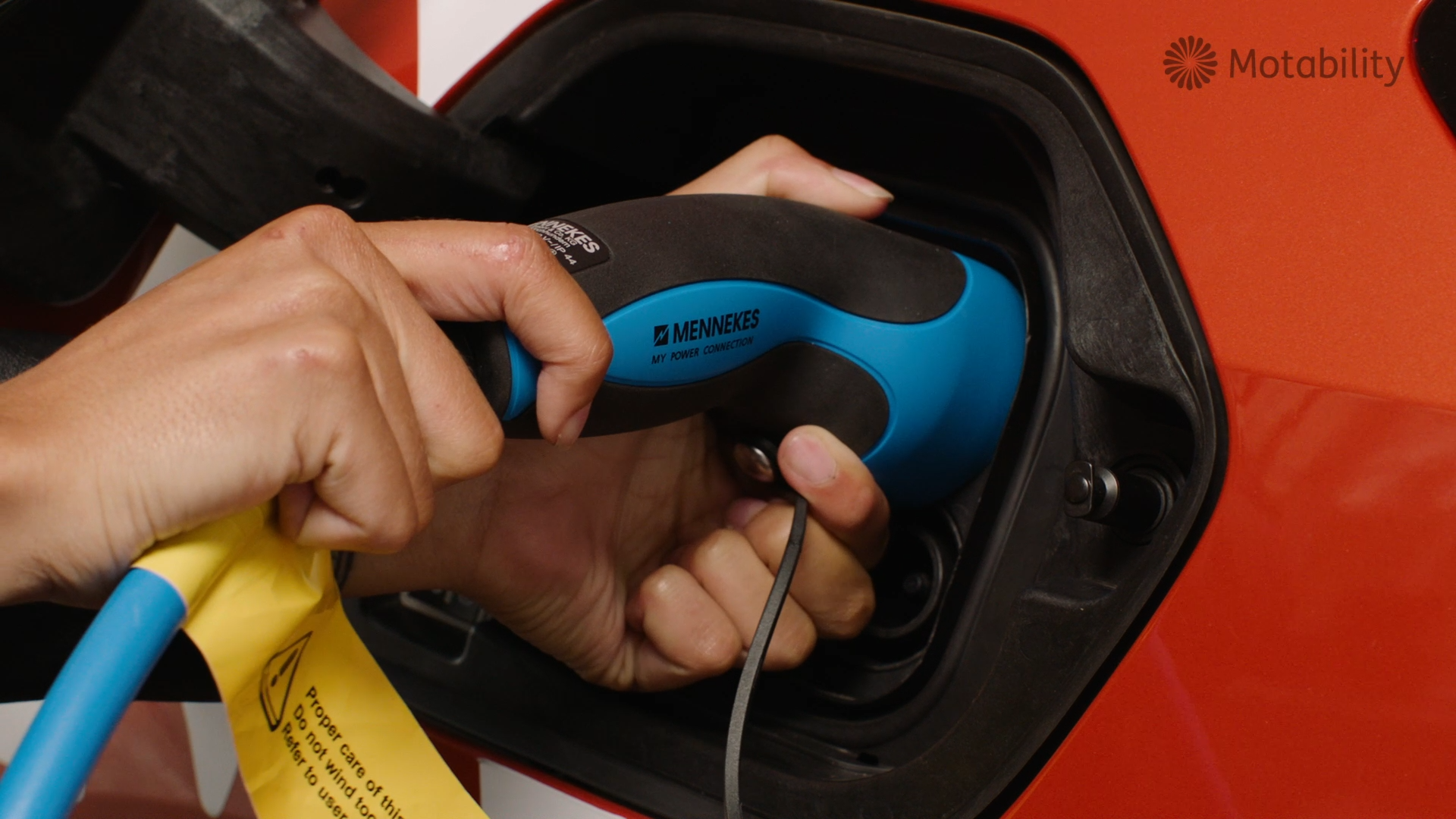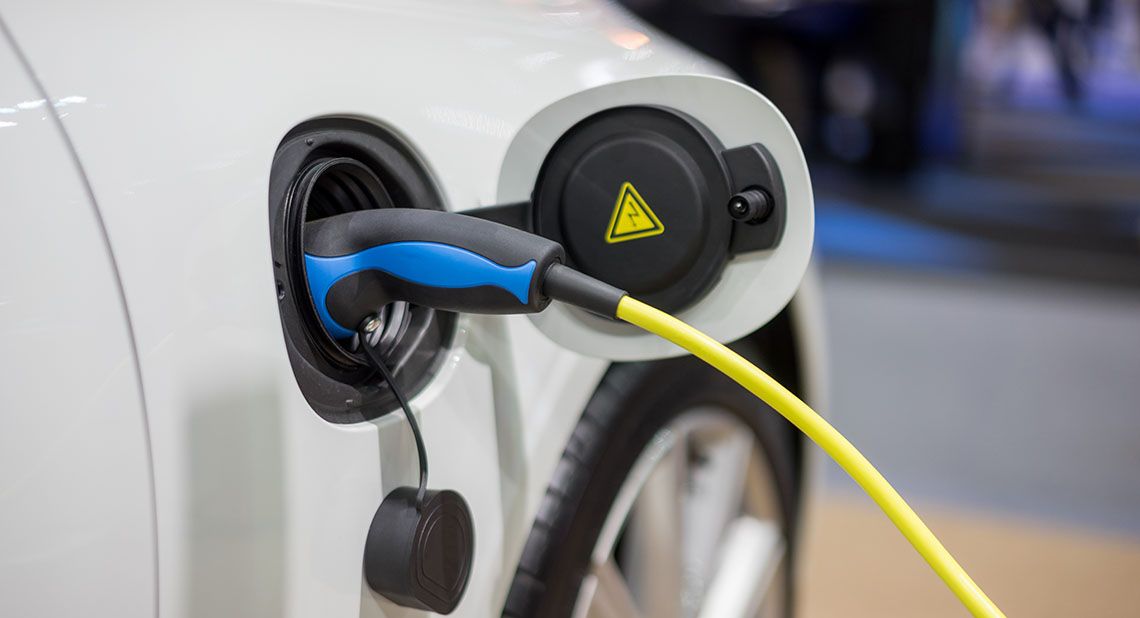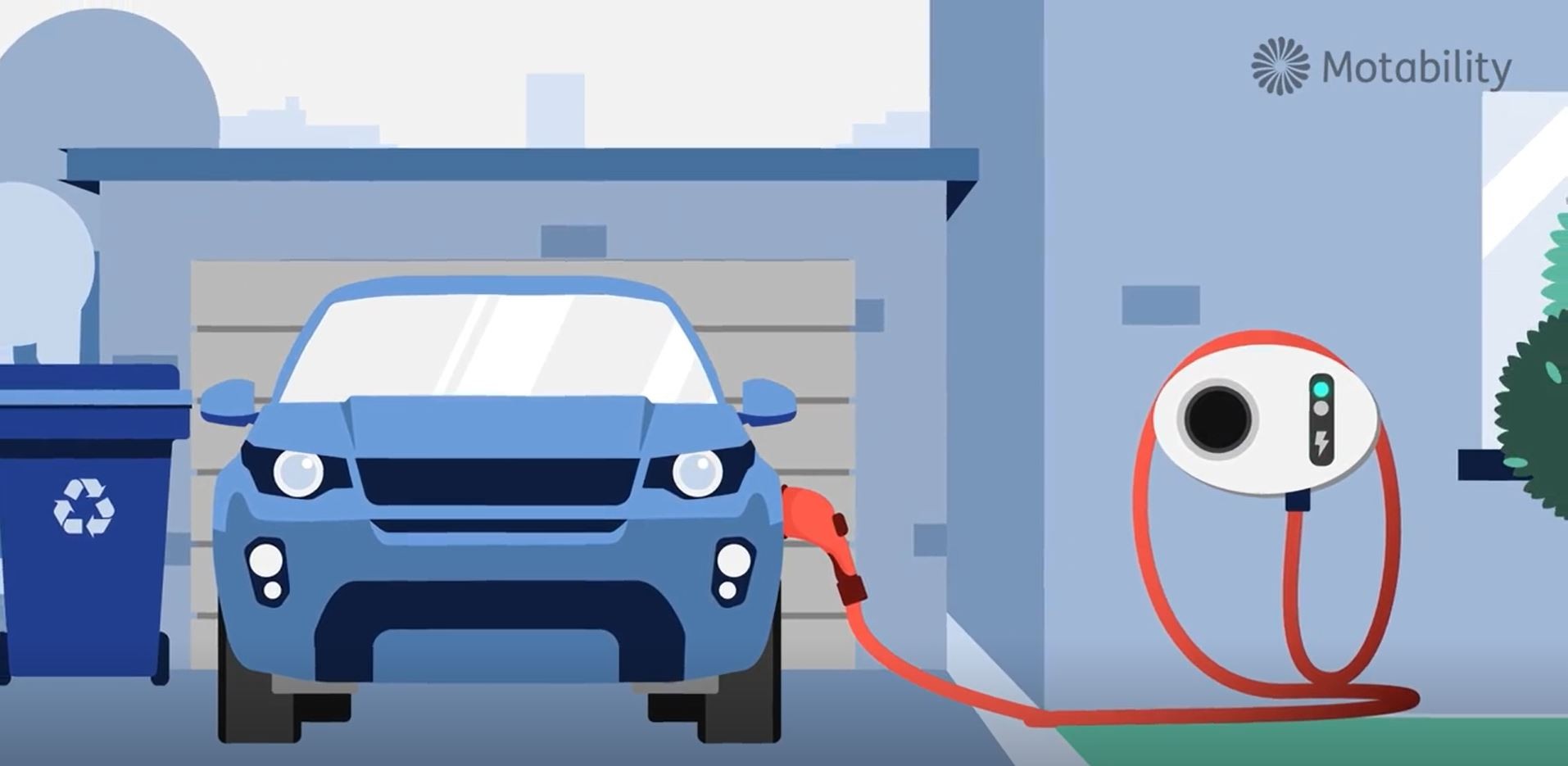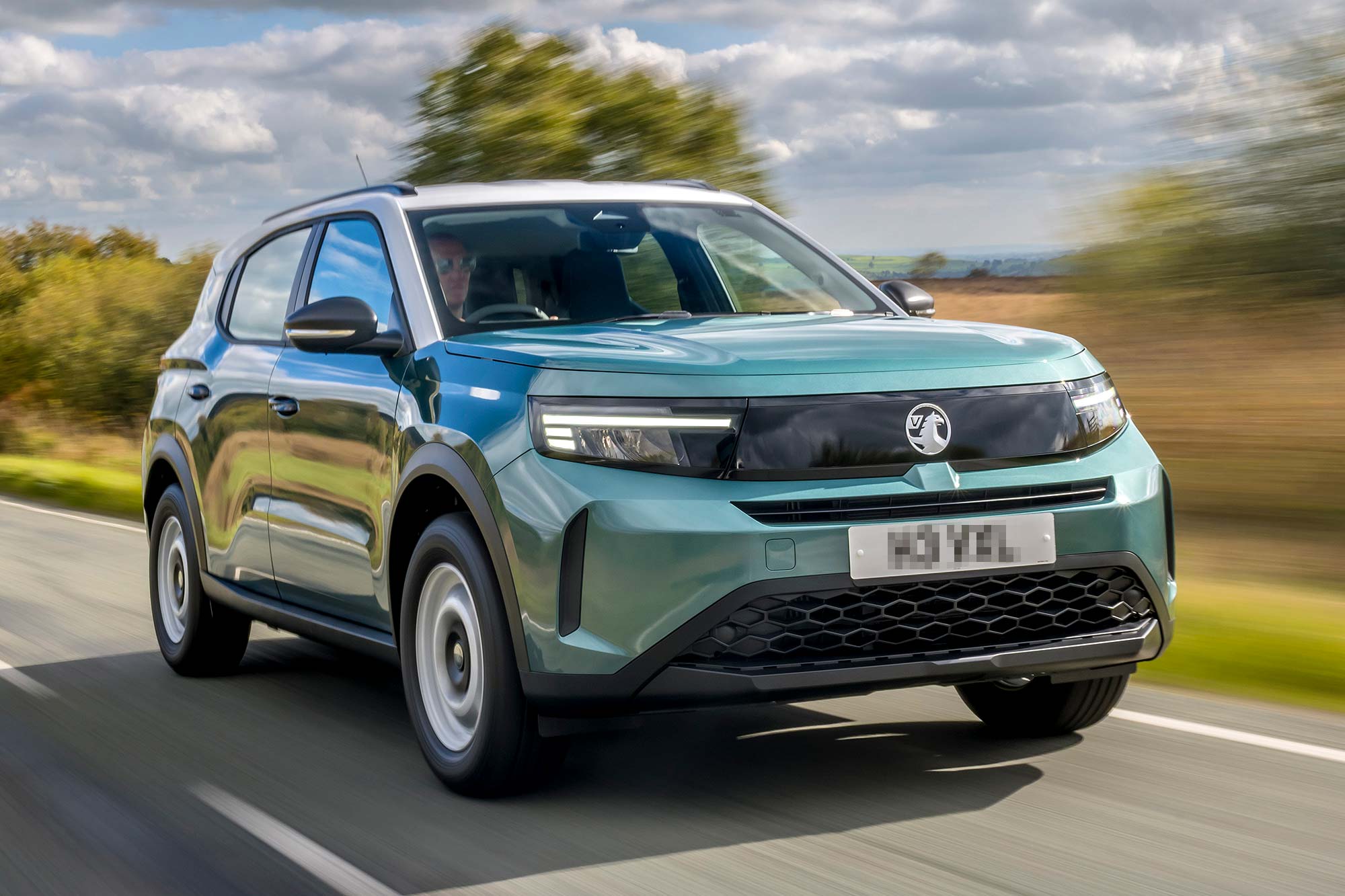Electric vehicles (EVs) are becoming a popular alternative to petrol and diesel cars. In this article, Nick Harper provides a step-by-step guide for charging your electric car whilst out and about, so that you can travel anywhere without worry.
With the number of fully electric and hybrid vehicles on the road increasing, the UK’s charging network has also expanded significantly, with more than 22,000 public charge points now available at around 12,000 locations.*
The vast majority of EV charges take place either at home (60%) or the workplace (30%), with the remaining 10% split between destination charging (7%) and en route charging (3%).**
Are you a Motability Scheme customer?
If you lease an electric car through the Motability Scheme and have off-street parking, you should be able to have a charge point fitted at your home. You can find more details about home charging point installation here.
Charging at home is a relatively simple process, plugging a cable from a charge point into your car. However, when you’re travelling further afield you may need to use a public charging point.
Things to consider when using a public charging point
1. Destination Charging
‘Destination Charging’ refers to charging points located in public locations, such as shopping centres, gyms and city-centre car parks. Most destination charging points offer a Type 2 connection, the most common connector that works with almost all electric cars. They are often free to use, offered as an incentive for drivers to use the store or business where the charge point is located. They take between an hour and five hours to charge a compatible EV, depending on the size of the battery and the speed of the charger. Destination chargers will usually require you to connect your own charging cable to the charging unit.
2. En route Charging
‘En route Charging’ uses an ever-growing network of high-powered rapid chargers – again, most offering the common Type 2 connection. These are usually located in and around motorway service stations or locations close to main routes, and they can charge your car to 80% full in around 30 minutes or less (so long as the car has rapid charging capabilities) – very convenient for longer journeys. You will, however, need to pay for that rapid charge, with costs varying from network to network. Rapid chargers have the charging cable tethered to the charger, so you do not need to bring your charger with you to use the station – though it’s wise to keep a charging cable in your car during journeys.
3. The right connector
Additionally, where you can stop to charge will depend on the type of charger you can use at the charging point, plus the shape and type of connector and socket on your vehicle. As EV plug types become more standardised, finding the right charging station en route is becoming less of an issue. Increasingly, electric vehicles will either have a Type 1 or Type 2 socket for slow/fast charging, and CHAdeMO or Combined Charging System [CCS] for DC [Direct Current] rapid charging. Most slow/fast charge points will have a Type 2 socket, into which you’ll attach your own charging cable. All DC rapid charging stations will have a tethered cable with (more often than not) a CHAdeMO and a CCS connector.
Just as you would plot your route using a physical map in the pre-digital days, it’s now wise to pre-plan every step of your journey using modern technology. No two journeys will be the same and there will be variations from model to model and provider to provider. Here’s are some tips for long car journeys that will involve using destination or en route charging.
How to plan a longer journey in an electric car
1. Map your journey
Knowing how to get from point A to point B is crucial in any journey, and the same is true when travelling in an electric vehicle. Zap Map shows every charge point in the UK — simply click onto a charge point icon on its map and it lists key information, such as the network provider, the number of charging points, the connection type and the operational status of the charge points.
You will need to factor in your EV’s range and plot your route carefully. Zap Map’s route planner makes this quick and easy — see the map at Zap-Map.com or download their app on Android or iOS. Alternatively, Apple Maps also offers EV routing to help you plan your journey.
2. Download an app
If you need to pay for the charge, it’s possible to do so via contactless card payment. However, the vast majority of charge points require you to pay using the provider’s app — and you’re likely to get preferential rates in return for your loyalty.
Once you know your route and the charging point you will be aiming to use, download that charge point provider’s app. It will ask you to register your vehicle and enter bank details to enable you to pay instantly when you reach any of its charge points. You can download and register en route or when you reach a charging point, but the process will slow you down. Whichever option you choose, you will need a reliable Wi-Fi connection or roaming plan to make a quick, easy payment.
3. Charge your car
The app you download will provide step-by-step instructions for how to use the provider’s charge point. While the instructions differ from provider to provider, the process should unfold as follows:
-
First, locate the charger
Park up beside an available charge point in the charging bay, close enough so that the cable will reach.
-
Now, plug in the charging cable
Most rapid en-route options have a tethered unit — the cable is attached to the unit, the other end is to be connected to your EV. If this is the case, you’ll need to select the correct connection for your vehicle and plug it into the socket on your car, as you would for a home charge. The symbol on the charging station should match the charging port on your EV, to show it’s compatible. Most charge points in the UK and across Europe have Type 2 cables as standard, allowing most EV and plug-in hybrid electric vehicle drivers to use the vast majority of public charge points. When connected, the cable locks in place and cannot be removed until the car is unlocked.
-
Next, make your payment
If the charge is free, follow the on-screen prompts and your car will begin to charge. If you need to pay for the charge, when the cable is attached the charger should automatically recognise that your registered vehicle is connected and prompt you to make your payment, which must be completed before charging can begin — though some charge points require your payment details before you connect the cables. Follow the charge point’s on-screen instructions, which are likely to prompt you to tap your smartphone or card on the screen. Once authorised, you should be prompted to attach the tethered charging cable into your EV. The screen is likely to show your EV’s charge percentage status and the cost for your charge, both of which will rise the longer the EV is left to charge. End the charge by pressing ‘End Charge’ on-screen and confirming. You may be asked to present your phone or card to the reader again to confirm and a receipt will either print or be sent to your email.
-
Finally, disconnect and drive away
To unplug the cable and end the process, you must first unlock the car. Remove the connector from your EV and place it back on the charging station, if using the tethered option. If using your own cable, disconnect and make sure to take it with you. You cannot drive off with the charger plugged in, your car will not allow it — the cables will be locked into place for as long as you are charging but disconnect when the process is complete. Your EV is now refuelled and good to go again.
How can I find an electric car on the Motability Scheme?
Motability Scheme customers can now choose to pick from fully electric cars by ticking the ‘Electric’ box under ‘Fuel Type’ in the Car Search tool.
Search the full range
Use our Car Search tool to tailor the choice of cars available on the Scheme to your specific needs. The ‘advanced search’ function lets you narrow down choices to your exact requirements, including Advance Payment, brand, individual model, body style, fuel type, fuel consumption, number of seats – even whether it’s eligible for younger drivers.
*Data sourced from Auto Express: https://www.autoexpress.co.uk/electric-cars/96638/electric-car-charging-uk-prices-networks-charger-types-and-top-tips
**Data sourced from Pod Point: https://pod-point.com/guides/driver/how-to-charge-electric-car
Related articles
The UK’s most scenic electric vehicle charging spots revealed
EVs on UK roads outnumber plug-in hybrids for the first time
Electric cars available on the Motability Scheme 2021
![]()
